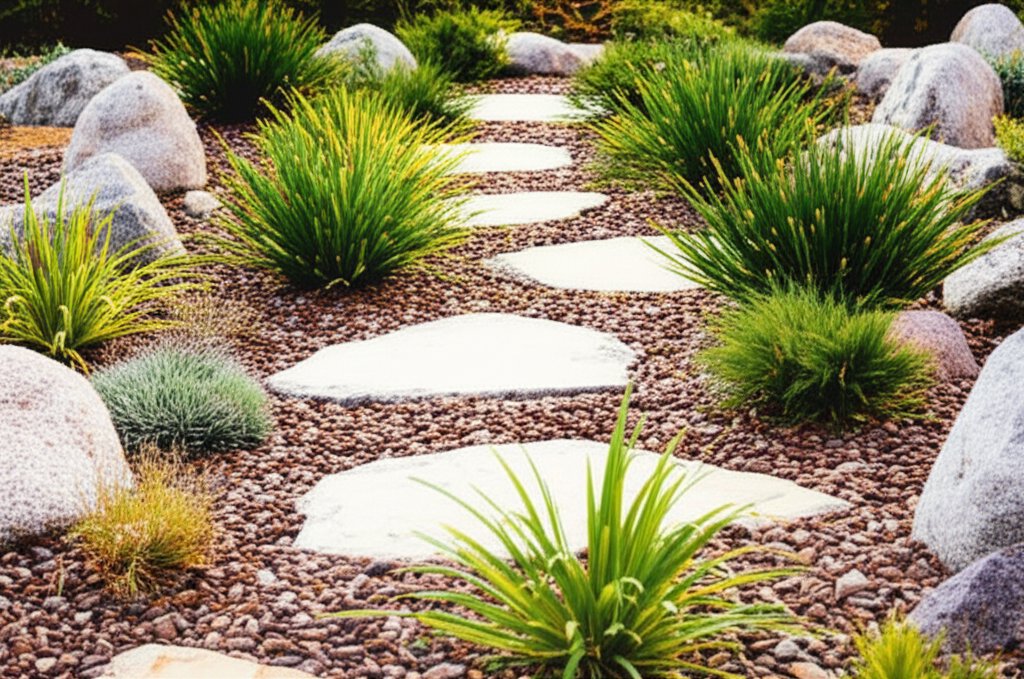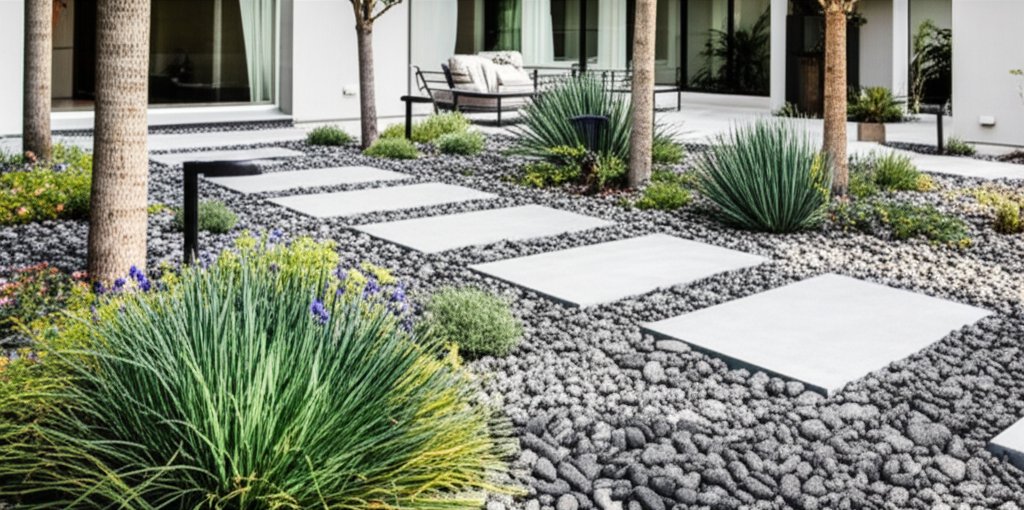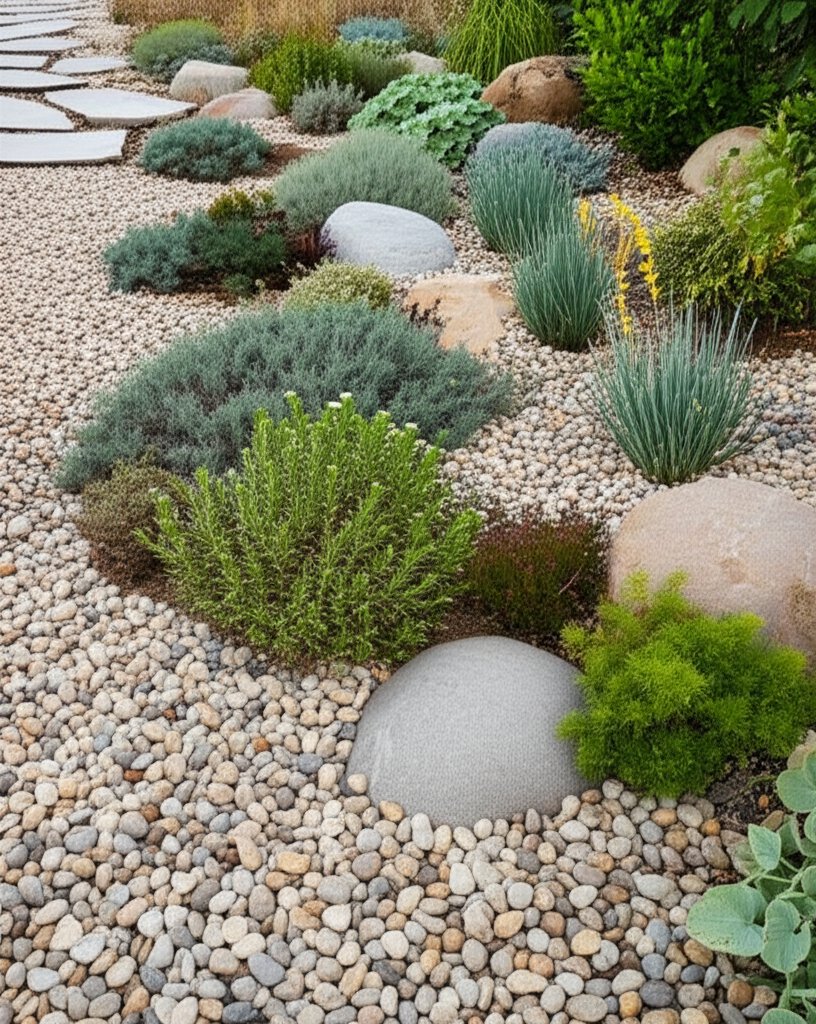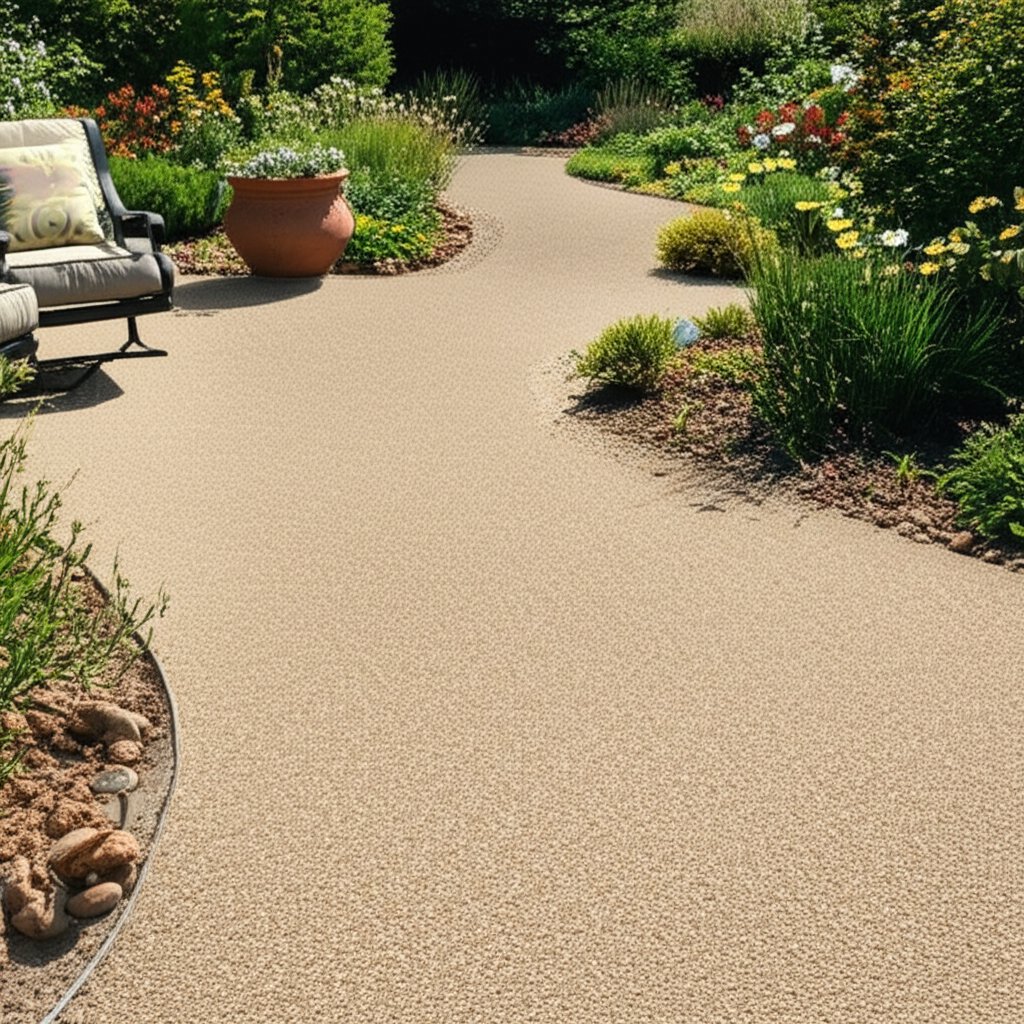Building an Affordable Gravel Garden with Mediterranean Inspiration
A gravel garden introduces the inviting warmth of Mediterranean landscapes to any yard at a modest expense. Such designs demand minimal upkeep, resist drought effectively, and deliver enduring visual interest. Through careful selection of layout, materials, and vegetation, homeowners craft an area that remains serene and welcoming throughout the seasons.
Benefits of Opting for a Gravel Garden
Gravel gardens align seamlessly with the sun-drenched aesthetic of Mediterranean designs. They substitute gravel or stone mulch for traditional turf or dense flower beds, thereby reducing both initial costs and ongoing labor. The gravel enhances soil drainage, suppresses weed emergence, and bounces sunlight to maintain a luminous environment.
These gardens prove particularly advantageous in regions characterized by arid summers or challenging soil types. Rather than resisting local conditions, the design embraces them. After initial establishment, the garden requires infrequent irrigation and sporadic weed removal, which suits schedules of occupied residents.
Designing the Layout
Begin the process by evaluating the intended function of the area. A gravel garden serves as an ornamental edge, a compact courtyard, or a comprehensive yard overhaul. Prepare a rough sketch of the property, marking zones of full sun exposure, partial shade, and potential features such as walkways or seating zones.
Embrace simplicity in the overall plan. Incorporate gentle curves for borders, group plants in loose clusters, and blend various gravel particle sizes to achieve a organic appearance over stark geometry. Mediterranean influences favor a casual arrangement, where foliage extends subtly onto paths or gravel expanses. Focus on achieving fluid transitions instead of perfect balance.
Selecting Appropriate Gravel Types
The gravel variety influences aesthetics and performance alike. Finer stones compact densely to form stable surfaces, whereas coarser options permit greater air circulation to support root health.
Consider these popular selections:
- Pea gravel: Small, smooth pebbles roughly the diameter of a pea, ideal for foot-friendly paths and patios due to their gentle texture.
- Crushed stone: Sharp-edged fragments that interlock securely, providing firmness and effective weed barriers.
- Decomposed granite: Powdery material that compacts into a sleek, earthy finish suitable for broad expanses.
- River rock: Substantial, polished boulders that introduce bold contrasts, though less practical for high-traffic routes.
For authentic Mediterranean vibes, select hues in warm spectrums such as beige, amber, or pale silver. These shades harmonize with elements like olive specimens, lavender blooms, and clay containers. Budget approximately one to three dollars per square foot for materials, varying by variety and regional availability.
Preparing the Site Foundation
Thorough site readiness guarantees the garden's longevity. Clear away existing sod, unwanted vegetation, and surface soil layers. Install permeable geotextile fabric to block weed intrusion while permitting water infiltration; steer clear of impermeable plastics that retain excess moisture and invite root diseases.
Apply gravel in depths of two to three inches for fine varieties, or extend to four inches for bulkier stones. Distribute evenly with a rake, then compact using a tamper to secure a uniform base. For pathways or lounging spots, incorporate a stabilized sub-layer beneath the gravel to bolster durability.
Choosing Drought-Resistant Mediterranean Plants
Vegetation infuses vitality and dimension into the gravel setting. Mediterranean gardens emphasize species adapted to intense heat, minimal rainfall, and lean soils. Prioritize selections that establish quickly and sustain with sparse hydration post-rooting.
Recommended varieties encompass:
- Lavender: Aromatic perennials that excel as border accents, blooming profusely in full sun.
- Rosemary: Versatile evergreen shrubs offering ornamental appeal and culinary utility, tolerant of neglect.
- Sage and thyme: Low-growing herbs that maintain tidy forms and withstand prolonged dry periods.
- Rockrose and santolina: Woody plants featuring silvery leaves that deflect harsh rays and require infrequent pruning.
- Succulents and agave: Architectural forms that demand negligible attention and store water efficiently.
- Ornamental grasses: Choices like blue fescue or feather grass introduce gentle sway and textural contrast.
Position plants with ample spacing to allow natural expansion, typically 18 to 24 inches apart depending on mature size. Combine differing leaf shapes and stature levels for dynamic interest. Introduce potted focal points in earthenware vessels to elevate vertical elements and evoke classic motifs.
Managing Expenses and Labor
The economical nature of gravel gardens stems from their straightforward execution. Basic supplies remain affordable, and individuals handle most tasks using everyday implements like shovels and wheelbarrows. A modest plot may total a few hundred dollars, escalating to several thousand for expansive zones that incorporate borders and greenery.
Effort represents the primary adjustable factor. Manual excavation, grading, and gravel transport span multiple weekends for solo efforts. Professional assistance accelerates completion at added expense. To economize, procure gravel by the cubic yard instead of packaged units, and repurpose on-site items such as reclaimed bricks for edging.
Simplifying Ongoing Care
Established gravel gardens demand light intervention. Essential routines include occasional weeding, surface raking, and periodic gravel replenishment. Accumulated dust and plant debris may foster unwanted growth between stones; consistent debris clearance mitigates this issue.
Irrigate new plantings weekly until roots anchor firmly, then limit to extreme dry intervals. Prune herbaceous and shrubby elements annually or biannually to preserve shape. Address gravel thinning by scattering a modest layer to restore coverage.
Employ a leaf blower at reduced power to remove foliage without displacing stones. In trafficked sections, rake periodically to realign and solidify the surface.
Incorporating Mediterranean Accents
Gravel foundations complement rugged elements seamlessly. Position terracotta planters, aged timber benches, and cast-iron accents to reinforce the theme. Introduce a modest fountain or avian basin for auditory and kinetic interest. Employ stone borders or modest retaining walls to delineate beds and provide framework.
Illuminate strategically with subdued solar fixtures or hanging lanterns amid foliage for evening ambiance. Maintain restraint in ornamentation to preserve the effortless essence of Mediterranean environs.
Executing Your Gravel Garden Project
A thoughtfully assembled gravel garden blends allure with utility at reasonable investment. It conserves resources, curtails chores, and scales to diverse plot dimensions.
Commence modestly, such as with one gravel panel or trail, to build familiarity. Gradually incorporate additional features or botanical additions as proficiency develops. Prioritize equilibrium among surface, hue, and silhouette for cohesive results.
Realizing Enduring Garden Rewards
A gravel garden evolves with elegance over time. Foliage expands organically, stones acquire patina, and the composition attains deeper unity. Residents allocate less effort to routine tasks like mowing or soaking, freeing moments to appreciate the panorama.
Diligent preparation and steady nurturing convert ordinary grounds into tranquil sanctuaries. The outcome manifests as a sun-warmed, perpetual domain that reflects personal vision.



